Tower crane operator training: The prevention of risks in the use of the tower crane must be carried out basically in the stages of transfer, assembly, operation, maintenance, disassembly, and storage…
What does Heavy Machinery Operator do?
tower crane operator
What do you need to handle a crane?
What is the job of a heavy machine operator?

Tower crane training
Tower crane operator training – Sky crane operator:
crane operator
A tower crane operator is going to maneuver all those heavy loads by shifting levers and pushing pedals. If you’re a fan of the manual transmission, think of it as (super) advanced driving.
Most construction sites are hotbeds for hazards, even on a good day. If you’re the one hovering hundreds of thousands of pounds over the heads of your friends, you can be sure safety is your only true friend.
In this bustling economy, full-time work is definitely available. In fact, you may even be able to score some nice, long shifts and hefty overtime payments.

Construction crane operator training
Tower Crane Operator Training – Tower crane operator school:
When you’re ready to embark on this new journey, start with the National Commission for the Certification of Crane Operators (NCCCO). They’re going to be your mecca for information and the ones you want to seek out for tower crane certification.
Also, depending on the state you live in, you may be required to attain licensing as well. But, before you wade into NCCCO waters, you’ll need to have your high school diploma or GED at the ready.
Then, it’s time to get certified. While this is voluntary, we all know how your resume is going to stack up against the competition if you have a proud NCCCO stamp of approval on display.
Here’s a look at the NCCCO’s training. To be eligible, you must be 18 years or older. You’ll also be required to pass their physical exams and comply with their policy on substance abuse. ( Tower crane operator )
Next up, there’s a multiple-choice exam containing 55 questions that must be answered within 60 minutes. Finally, there’s a practice exam in which you’ll have to operate an actual tower crane.
All that hard work will earn you a certification that’s good for five full years. And be sure to double-check with the NCCCO because, in some states, this certification will fulfill state licensing requirements.
Tower Crane Installation
Tower Crane Operator Training: Assembly work must be very easy to perform, quickly and with the least number of sequences. The crane must carry all its preassembled main assemblies.
Transfer: The tower crane must be able to be transported in an appropriate number of trucks so that it can carry its components in the proper order for immediate assembly without the need for intermediate storage. ( Tower crane operator training )
Location: The location of the crane must be studied in such a way that it can not interfere with adjacent buildings and high-voltage cables, which also allows the assembly and disassembly operations to be carried out in safety conditions for people, equipment and the environment.
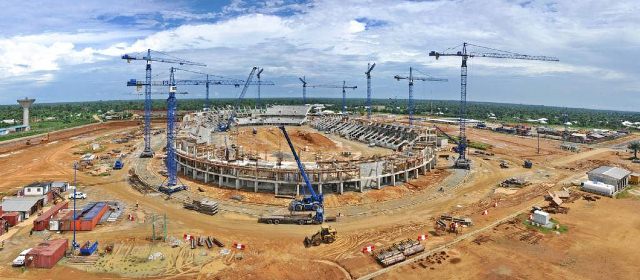
Crane safety
The place of placement and its translation path, when appropriate, must be chosen in order to comply with the following:
There must be a minimum safety space between the different parts of the tower crane and the power line, this must be less than:
MINIMUM DISTANCES:
- 3 m, when the voltage is less than or equal to 380 Volt 5 0 Hz.
- 5 m, when the voltage is greater than 380 Volt 50 Hz and less than 13,600 Volt.
- 7 m, when the voltage is equal to or greater than 13,600 Volt.
It must have a minimum free space of 0.60 m wide by 2.50 m high, to facilitate the movement of the personnel.
More than a crane: In the event that more than one tower crane must be installed, it must also comply that:
- The minimum distance between the end of the boom of one and the trunk of another should be 2 m.
- The vertical distance between the lowest element (hook in high position or aerial counterweight) of the highest crane and the highest element of the other tower crane capable of the collision, must be at least 3 m.
- In the case of rolling cranes, there must be an appropriate system that prevents them from approaching a distance less than any of those indicated above.
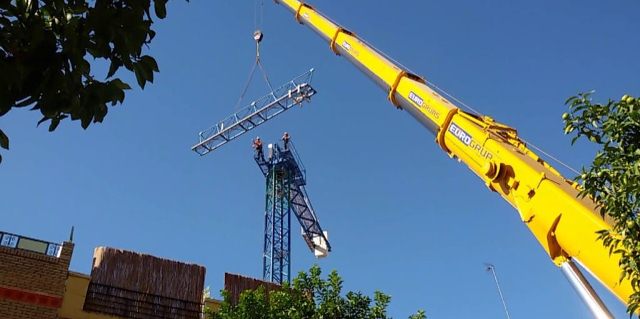
Electrical installation
The electrical installations must be designed and executed in accordance with current legal regulations.
Construction tower cranes of the rolling type, whose supply is provided with connections at various points of the route, must be fed with a single line of power supply.
Tower crane datasheet
Construction Tower crane – Technical data sheet: construction Crane Operator Training
The tower cranes mounted must have protective elements, which will be placed in a point near the power line, it is an automatic switch that disconnects the power to the system in case of electrical damage and a manual switch that can remain blocked in disconnection case.
All ducting, laying or electrical installation must be provided with a cover or coating that allows it to resist the action of external agents and especially the wear produced by traction, bending, twisting and friction caused by the use of the crane.
The minimum electrical equipment of a tower crane must include a switch whose sole function is to cut or connect the power supply or a single device that fulfills the two functions.
These devices must be built for industrial current, have the necessary capacity according to the manufacturer’s specifications of the tower crane and be located at an easily accessible point.
Any switch that only secures the electrical separation function must be capable of blocking the connection function when it is in the open or disconnected position.
The crane’s command system must be equipped with a pulse that has immediate and instantaneous action on the general cutting switch, typical of the tower crane.
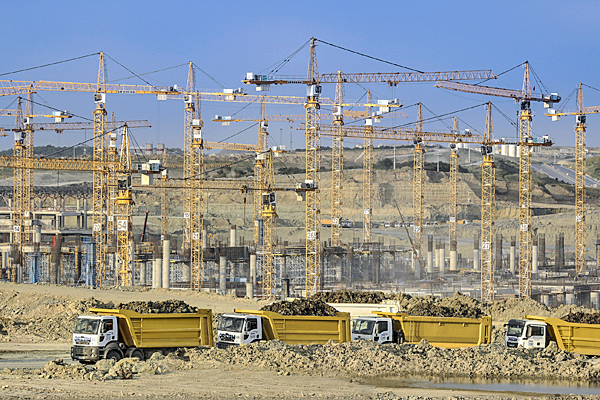
Public network electric power
In the event that the tower crane is powered by domiciliary electric power, it must have omnipolar switches, one that works only in the function of the separation of the electrical source and another that works only in the function of cutting.
The masses, fixed or mobile, must be in solidarity with each other, through a connection and a conductor that ensures sufficient continuity of energy.
This connection is preferably carried out by means of a protective conductor that can be incorporated in the power cables, or be independent.
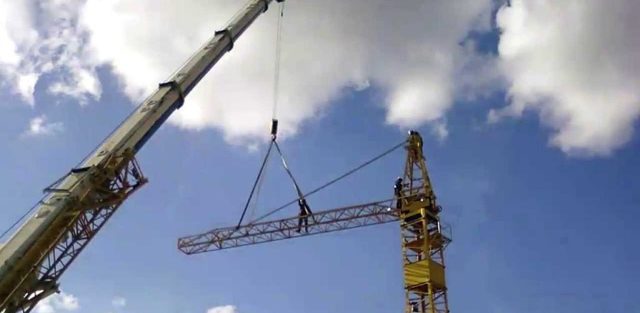
Tower crane electrical load
Tower crane operator training: safety topics
External electrical power: In the case of a tower crane powered by an external electrical source, the masses, and metal components must be connected to the general circuit of the service ground.
The sections of metal rails, of the railway type, must be electrically joined together and connected at their ends to the service ground of the work.
When copper conductors are used, the minimum cross-section of the conductor to the service earth must be 35 mm 2.
The power cables of the tower crane must consist of active conductors and protective conductors; The minimum section of the protective conductor must be determined in accordance with current legal regulations.
General recommendations:
- Ensure that all structural sections are stored on sleepers.
- Ensure that the base pins are fully adjusted.
- Make sure all bolts are tight with their corresponding nuts.
- When assembling the sections, make sure that they are correctly oriented, for example, the scales must coincide.
- When adjusting the bolts of the tower, the counterweight of the boom must be aligned on the corner of the tower.

Tower crane ballast
The transmission of loads at each level must be done by means of frames calculated and manufactured in accordance with the instructions of the manufacturer of the tower crane.
The number of frames for fixing the braces or braces and the location thereof must correspond to the provisions of the assembly manual. The fixation calculations are the responsibility of the owner of the crane.
Once the crane has been assembled, the professional in charge should check in the presence of the user that all safety systems are working correctly; this must be included in a document signed by both, in which the user must also commit to not modify the regulations of all the mechanisms.
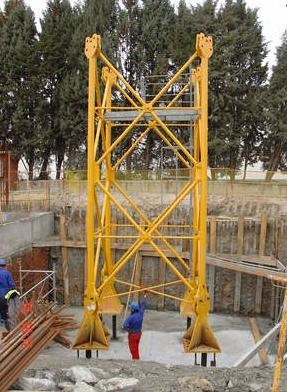
Tower crane safety devices
Safety measures for crane works – Operation of cranes: Tower Crane Operator Training
crane operator
- Periodic inspections must be made to the tower crane, through a checklist, which contains the critical points of the machinery and thus prevents accidents in the use of it.
- During its use, the tower cranes must be submitted to a periodic maintenance program, at least once a month, in order to verify the proper functioning of the safety mechanisms, cables, hooks, pulleys, etc.
- These controls must be carried out in accordance with the instructions contained in the manufacturer’s manuals, must be carried out by qualified personnel and must be recorded on a document signed by the owner and the user, or their representative.
- Every day, you must ask for the work plan or instruction and the order of the movements to be made with the crane with an estimated work schedule. Example:
- concrete at 08.00 hrs.
- movement of iron at 10.00 hrs.
- unload trucks from 11.00 to 12.30 hrs.
Tower crane safety checklist
Tower crane operator training: Recommendations during maneuvers.
- In the relays, the outgoing crane operator must indicate his impressions to the entrant about the state of the crane and write it down in a book of incidents that will be kept in the work.
- The level of the crane in its chassis and its verticality or lead in its panels (trunks) will be visually checked.
- Permanently check the condition of the straps and slings, and if any anomaly or defect is found, permanently disable them to prevent them from being used again due to error or omission.
- If the crane has been stopped with the emergency stop button, it should not be started immediately. We must wait for the oscillations caused by it to decrease.
- Verify if there is any air limitation. In the case of high voltage cables, these should be protected and marked with protective screens or PVC pipes of visible colors at a distance.
Safety signage on cranes
- Remember that before high voltage cables, you should always work at a distance of 45 m. to avoid electric induction.
- Plant sectorization of a building under construction. Example: if you have a lot it is divided into modules of 3 X3 and assigned a number (A1, B1, C1, A2, B2, C2, A3, B3, C3); then a task is assigned to each sector
- A1 slab concrete
- B2 concrete wall
- C2 formwork
- C1 iron
- A2 slab concrete
- B1 wall concrete
Safety regulations on cranes
- The owner or operator of the crane must ensure that in the case of cranes on rails or fixed cranes, a safe distance is maintained when materials are gathered in the vicinity of the crane, said distance shall be at least 0.5 m from any mobile external point of the crane.
Operation radius of a crane
- In 360º turn controls, due to an obstacle in its path, the pertinent control measures must be taken. (Limit boom sweeping area or change the height of the tower crane or change its location).
- All cranes have a time device, which prevents the speeds from changing violently, the operator should check that the commands change the speeds smoothly.
- Always look at the load and the possible obstacles that may be encountered in your journey.
Tower crane operator training
Tower crane operator training: Lifting with cranes – Safety procedures
crane operator
- Do not carry out maneuvers with load, if you do not have a complete vision; otherwise, request a signalman to the work.
- Do not lift loads that at a glance exceed the capacity of the crane.
- Do not lift badly damaged loads and/or badly stowed. Always check that there are no loose materials that may come off and fall when stroking.
- It is strictly forbidden to use strobe spells; as those who have cable press, etc.
- It is recommended to always use shock absorbers or protectors, such as softwood or rubber, to protect the strobes and slings from the sharp edges of some load.
- Never allow the load to go beyond the real reach of the crane pushed by the workers, because in these conditions, and because the movements are stopped, the load limiters do not operate and the maximum moment is increased.
- Avoid that the loads move with abruptness and pendulum. If a pendulum or an oscillation occurs, do not make movements that could aggravate this phenomenon, stop turning causing the pendulum effect. Do not try to compensate for the dealer’s car. (Tower crane operator)
- Do not lift loads that are attached to walls or the ground, in case of occurrence, it is very common that, begin to detach.
- Avoid impacts caused by jerks when lifting and/or lowering loads. You should not break or move the load suddenly.
- The loads must be deposited stably, before being unhooked. Make sure that the personnel is outside the discharge sector, while this operation is being carried out.
- Never try to drag or push any load on the ground, or at any level of work.
- The load before being hoisted must be correctly centered and tied. When lifting or lowering, use appropriate slings: never improvise with cables or non-standard chains.
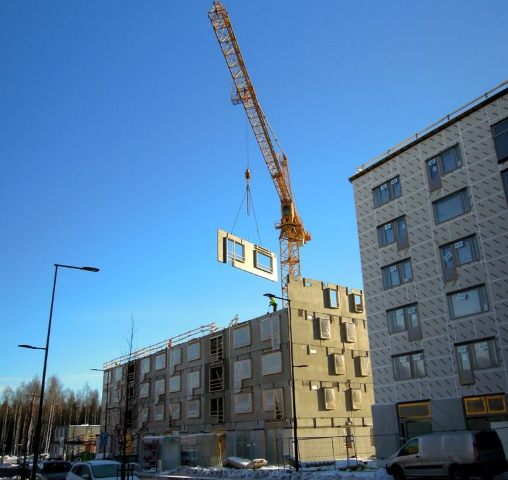
Workplace safety topics
Tower crane operator training: Safety in lifting maneuvers
- All hoisting equipment must have a warning system to alert whenever loading, moving or descending loads begin.
- All the loads that present a large area, can get out of control, as a result of the wind. The signs placed on the pen, depending on their size, can cause problems in handling.
- Never leave a suspended load when placing the crane out of service.
Safety precautions
Tower crane operator training: Safety regulations on cranes.
- Do not use safety devices or the stop button, to stop the normal movement.
- Obey any arrest warrant, wherever it comes from because it can be a warning sign of danger.
- Do not allow unauthorized persons to access the keypad, electrical panel or crane structures. They can be crashed or be the source of accidents.
- Keep the cabin and access to it neat and clean, without looking good, without grease, without spare parts.
Safety topics
Safety systems in cranes: Tower Crane Operator Training
Tower crane operator
- Always keep the ladder clean of grease and oil.
- The operator and also the mechanics, should not use any type of loose clothing. In case you wear long hair, you must take it tied and collected inside the helmet.
- The falling of objects from the mechanisms or superior structures by means of suitable devices must be prevented, especially when working with boxes or covers that can be opened, hanging mechanisms and in the case of the distributor cart, it is necessary to avoid that the rollers escape from the guide rail or that the fall of the car occurs.
- Never climb up the supporting structure, except on a crane on the outside; always use the scales with their safety rings.
- All mobile mechanisms, which may represent danger, must have protective elements.
- Do not make jokes with the hook or the pen.
- It is recommended to periodically check that the hooks are not broken or crushed.

Recommendations in public area
Tower crane operator:
- If the crane is on track, its movement of translation must be with the boom parallel to the track.
- During the entire operation of the cranes, the hooks must be kept high enough to avoid causing injury to people or damage to nearby structures or equipment.
- Operators must be in radial (direct) contact when there is a danger of a collision between Tower Cranes.

Construction night work safety plan
Recommendations at night time:
Tower crane operator
- When, for reasons of the work, the crane has to work at night, you must implement good lighting. In this case, it is necessary that two operators remain in work, in order to allow alternate rest of each one of them.
- When several cranes occupy common areas, the company in charge of operating the crane or its authorized representative must determine the sequence of work in advance and must ensure that the crane operators can communicate their intentions with each other.
- When a load is lifted by more than one crane at a time, the company in charge of the operation must determine the order of succession of movements in advance, and the work must be done in the presence of a supervisor appointed by the company.
- At the end of the working day, or when the crane is out of service, the tower crane must be left in vane position, the car must be pushed back to the foot, and the hook lifted to a reasonable minimum height, in addition, the power must be disconnected electrical

Risks in tower cranes
Manual of safety in cranes and maneuvers, in summary, the main risks of accidents in the operation of a tower crane are:
Tower crane operator training: Out of standard conditions more frequent
- Deficient consolidation of the structure of the building.
- Location in places of little stability.
- The poor state of safety devices.
- Lack of connection to the ground.
- A bad condition of cables, hooks, slings, winds or other accessories.
- Lack of re-tightening in metal structures.
- Poor lighting in night shifts.
- The poor condition and/or absence of an emergency exit staircase.
Most frequent non-standard actions
- Operate without authorization.
- Operate without having rigorous training and training.
- Bad cargo mooring.
- Operate the crane, before the signalman indicates it.
- Operate the equipment, when it is found personal in the trajectory of the pen.
- Maneuver at a higher speed, when it is at the limit of its load capacity.
- Maneuver without a signalman.
- Operate in night shifts, without good lighting of the job.
- Operate in shifts with a signalman without vests or reflective gloves.
- No seatbelt use, in maintenance, assembly, and disassembly tasks.
What does a crane operator do?
Tower crane operator:
Crane operators control cranes or draglines to lift, move, position or place machinery, equipment and other large objects at construction or industrial sites, ports, railway yards, surface mines, and other similar locations. They are employed by construction, mining, shipbuilding, railway, and crane rental companies.
The maximum wind speed for safe vacuum lifter use is 18 miles per hour / 29 kilometers per hour / 8 meters per second.
Strong winds could cause the load sway violently or drop, potentially resulting in damage to the surroundings and injuries. Remember that wind speed increases with height, so high-level glazing and construction work in high winds is even more hazardous.
In 2018, the Bureau of Labor Statistics indicated that the average, annual crane operator salary was $55,750. Experienced crane operators that are working on large-scale projects may make as much as $84,250.
A Crane or Tower Operator will usually earn a wage of around 40000 and 60000 based on education and experience. Crane and Tower Operators usually receive an average pay level of Fifty Thousand One Hundred dollars on a yearly basis.
The overall job outlook for Crane or Tower Operator careers has been negative since 2004. Demand for Crane and Tower Operators is expected to go up, with an expected 1,390 new jobs filled by 2018. This represents an annual increase of 0.44 percent over the next few years.
Crane operator apprenticeship training programs vary in length depending on the equipment you will be operating. The programs range from one to three years in length and involve on-the-job training, technical training and a final certificate exam.
The most read
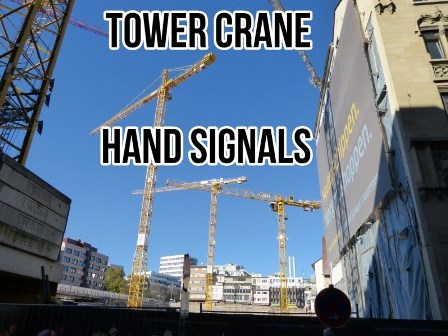
Tower Crane Hand Signals
Every successful lifting operation is the result of planning and teamwork. The definition of teamwork is “a united effort by all to achieve the ultimate goal”.
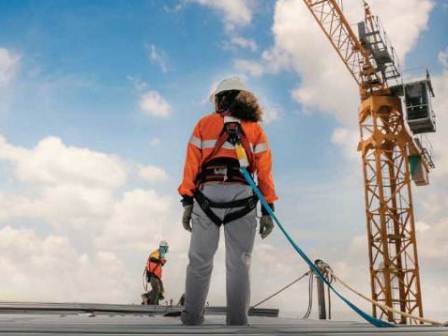
Tower Crane safety
Tower Crane Safety: Construction safety meeting topics, tower crane safety training, crane operator training, construction tower crane lighting requirements.
